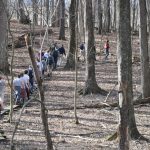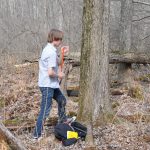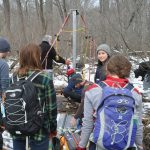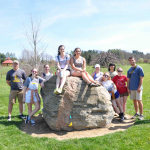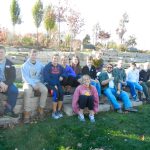Two class projects kick off the Climate Change course. The first deals with tree-ring dating (dendrochronology, blog post coming soon) of historical structures and then analyzing the tree-rings for their climate significance. The second is is shown below and it concerned with analyzing sediment cores that document climate variability since the last Ice Age. Below are some photos of the bog coring – great thanks to Dr. Tom Lowell and his Glacial Geology class from the University of Cincinnati – the folks who did most of the work.
Setting up the coring rig at Browns Lake – early in the day snow covered the ground by 4 pm it was gone.
The core boss (Dr. Tom Lowell) oversees the extraction of another meter of mud from the bog.
The probing team sends down 7 rods through the mud until refusal. Mapping the mud thickness gives an idea of the geometry of the bog and allows for the construction of an isopach map.
Extracting peat – the upper 5 meters or so are peat.
Setting up the production line.
Coring a tree to determine the recruitment time – the hypothesis is that these trees moved into the bog recently (past 200 years) – the first trees here since the Ice Age. This nutrient limited bog was fertilized by wind blown dust during European Settlement allowing these vascular plants to obtain a foothold in the previously sphagnum moss dominated bog.
Hey there is a Wooster student – good job Ben.
Nick samples the bog water for its isotopic composition.








